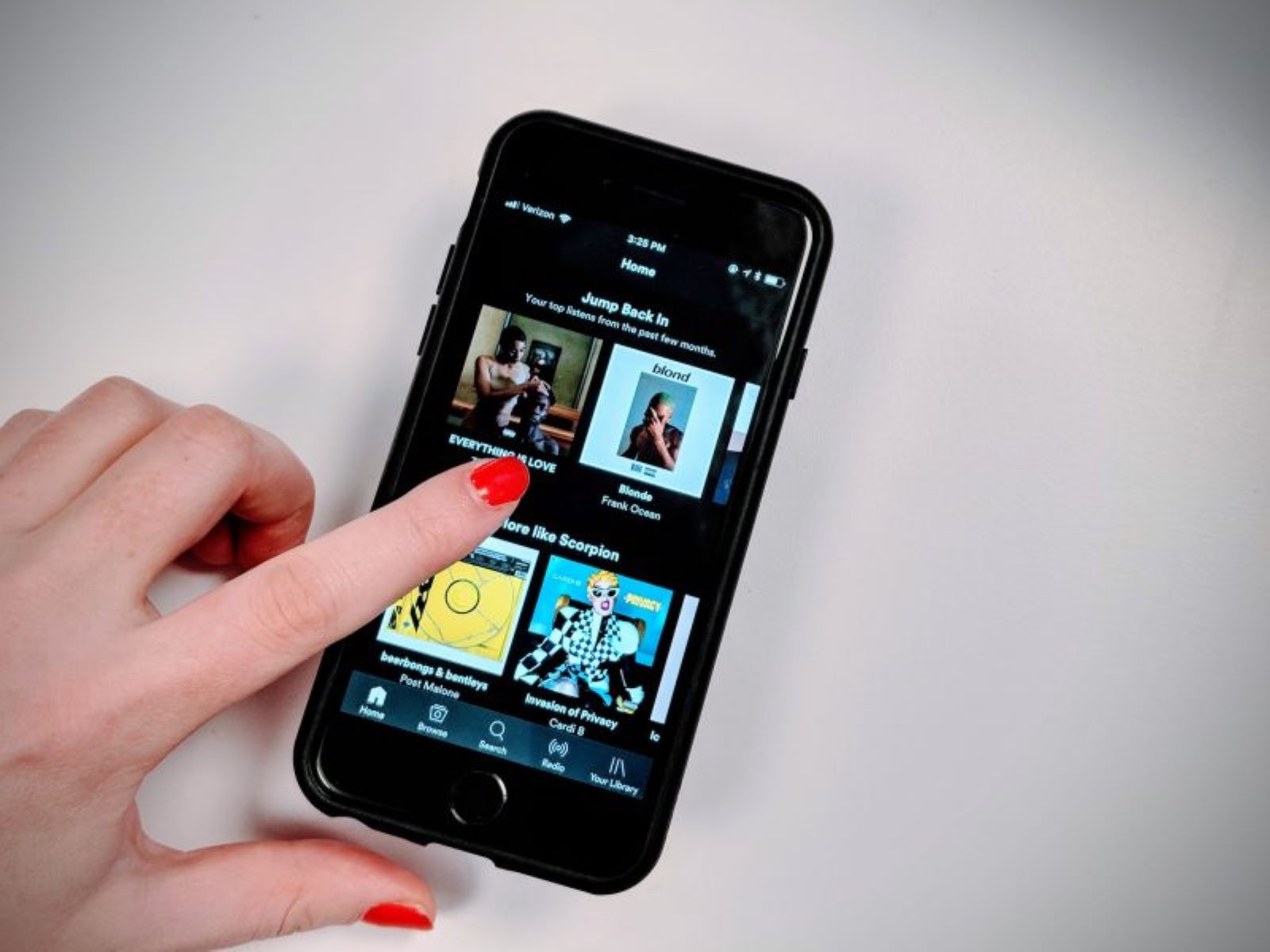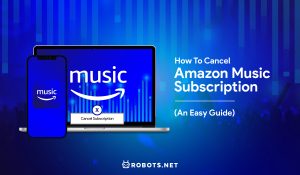Introduction
When it comes to streaming music, Spotify and Apple Music have become two of the biggest players in the industry. Both services offer millions of songs at your fingertips, but they have their own unique features and user experiences. Whether you’re a music enthusiast or just looking for a convenient way to listen to your favorite tracks, choosing between Spotify and Apple Music can be a daunting task.
Spotify, founded in 2006, has gained popularity for its extensive music library and user-friendly interface. It boasts over 70 million tracks and supports various platforms, including mobile, desktop, and web. On the other hand, Apple Music, launched in 2015, offers a more seamless integration with Apple’s ecosystem of devices and services, including Siri voice commands and HomePod compatibility.
In this article, we will delve into the factors that differentiate Spotify and Apple Music, helping you determine which platform is better suited to your musical preferences and lifestyle.
User Interface
The user interface (UI) plays a significant role in determining the overall user experience of a streaming service. Both Spotify and Apple Music have well-designed interfaces, but they have distinct differences.
Spotify is known for its simple and intuitive interface. The home screen prominently displays your recently played music, personalized playlists, and curated recommendations. The navigation is straightforward, providing quick access to your library, playlists, and search function. Additionally, Spotify offers a dark theme option, which can be easier on the eyes during nighttime listening sessions.
On the other hand, Apple Music’s interface follows a more visually-rich design. The “For You” section presents a wide range of recommendations based on your listening habits, curated playlists, and personalized mixes. The Explore tab offers a selection of popular genres and playlists, making it easier to discover new music. Apple Music also integrates album art and artist images into the interface, providing a visually immersive experience.
In terms of customization, Spotify allows users to create and share playlists more easily. Its collaborative playlist feature enables multiple users to contribute to the same playlist, making it ideal for group listening sessions. Apple Music, on the other hand, offers better integration with Apple’s ecosystem, allowing you to control playback via other devices such as the Apple Watch or HomePod.
Overall, Spotify’s simplicity and ease of use make it a favorite among users who prefer a straightforward and streamlined interface. On the other hand, Apple Music’s visually appealing design and integration with Apple devices make it a preferred choice for Apple enthusiasts looking for a seamless experience across their devices.
Music Library
The size and variety of the music library is a crucial consideration when choosing a streaming service. Both Spotify and Apple Music offer extensive catalogs, but there are some differences in their music libraries.
Spotify boasts a vast collection of over 70 million songs, covering a wide range of genres and languages. Its library includes songs from major record labels, independent artists, and even underground musicians. This extensive collection ensures that you can find almost any song you’re looking for, regardless of your musical preferences.
Apple Music, on the other hand, has a similarly impressive library, with over 75 million songs. While the difference in the number of songs may seem negligible, Apple Music focuses on curating high-quality content. It works closely with artists and labels to offer exclusive releases and early access to hot tracks, making it an attractive option for music enthusiasts who want to stay up to date with the latest releases.
In addition to their extensive collections, both platforms offer music videos and podcasts. Spotify has a wide range of podcasts available, making it a popular choice for podcast lovers, while Apple Music offers a growing selection of original podcasts and radio shows, such as the popular Beats 1 radio station.
One notable difference between the two platforms is their approach to independent artists and underground music. Spotify has been known for championing independent artists and providing exposure to emerging talent through its curated playlists and algorithms. Apple Music, on the other hand, emphasizes its partnerships with major labels and artists, resulting in more exclusive content and early releases.
Overall, both Spotify and Apple Music provide extensive music libraries with millions of songs, offering something for every music lover. If you’re interested in accessing a broad range of music from various genres and languages, Spotify may be a better fit. However, if you’re particularly interested in exclusive releases and staying up to date with the latest tracks, Apple Music might be your go-to choice.
Sound Quality
One key factor that music enthusiasts often consider when choosing a streaming service is the sound quality. Both Spotify and Apple Music offer high-quality audio, but there are differences in their streaming quality options and audio codecs.
Spotify offers three tiers of audio quality: Normal, High, and Very High. The Normal quality (96 kbps) is suitable for casual listening and conserves data, making it ideal for users with limited data plans. The High quality (160 kbps) offers a better listening experience with enhanced clarity and detail. For those seeking the ultimate audio experience, Spotify’s Very High quality (up to 320 kbps for Premium subscribers) provides lossless audio, delivering studio-quality sound.
Apple Music, on the other hand, offers a streaming quality of 256 kbps, which is higher than Spotify’s Normal and High quality options. While it may not offer lossless audio like Spotify’s Very High quality, the difference in sound quality between the two platforms is often subjective and may not be easily discernible for the average listener.
It is worth noting that both Spotify and Apple Music support the AAC (Advanced Audio Coding) format, which offers better sound quality at lower bit rates compared to other codecs. This means that even at lower streaming quality levels, the audio on both platforms still sounds impressive.
Another aspect to consider is the potential for music to be dynamically adjusted to the listener’s connection quality. Spotify introduced the “Audio Normalization” feature, which automatically adjusts the volume level of tracks to ensure consistency across different songs and genres. Apple Music, on the other hand, does not have a similar feature, and the volume level may vary from track to track.
In summary, both Spotify and Apple Music deliver high-quality audio in a format that minimizes file size without compromising sound quality. The difference in sound quality between the two platforms is subjective and may depend on factors such as the listener’s audio equipment and their ability to discern subtle differences in sound. For most listeners, the audio quality offered by both platforms is more than satisfactory.
Curated Playlists
Curated playlists have become a significant selling point for streaming services, as they offer users a convenient way to discover new music and enjoy carefully crafted collections of songs for different moods and occasions. Both Spotify and Apple Music excel in this area, but there are some differences in their approach to curated playlists.
Spotify is well-known for its robust selection of curated playlists. The platform offers a wide range of playlists created by its in-house editorial team and guest curators. These playlists cover various genres, moods, and activities, catering to different musical tastes and preferences. Spotify’s algorithmic playlists, such as Discover Weekly and Release Radar, offer personalized recommendations based on your listening habits, ensuring that you always have fresh music to explore.
Apple Music takes a slightly different approach to curated playlists. While it also offers a vast selection of playlists created by Apple’s editorial team, the focus is more on human curation. Apple Music places a strong emphasis on featuring playlists made by musicians, journalists, and influential figures in the music industry. This approach provides unique perspectives and introduces users to a diverse range of music.
Both Spotify and Apple Music allow users to create their own playlists and share them with others. However, Spotify has gained an edge in this area with its collaborative playlist feature, which lets multiple users contribute to the same playlist. This feature is particularly useful for collaborative listening sessions or when organizing playlists for events or parties.
In terms of playlist discovery, Spotify has a more intuitive and user-friendly interface. Its “Browse” section offers a wide variety of playlists organized by genre, mood, and activity. Apple Music’s “For You” section provides personalized playlists and recommendations, while the “Browse” section offers a curated selection of playlists for different genres and activities. However, some users may find Apple Music’s playlist recommendations to be less accurate compared to Spotify’s algorithmic suggestions.
Overall, both Spotify and Apple Music offer an impressive array of curated playlists that cater to different musical tastes and moods. While Spotify’s algorithmic recommendations and collaborative playlist feature give it an advantage, Apple Music’s human-curated playlists provide a unique and diverse listening experience. Ultimately, the choice between the two platforms will depend on your preference for personalized recommendations or a curated selection of playlists from industry experts.
Personalized Recommendations
Personalized recommendations are a key feature of modern streaming services, as they help users discover new music based on their listening habits and preferences. Both Spotify and Apple Music offer personalized recommendations, but they have distinct approaches to this feature.
Spotify is widely recognized for its sophisticated recommendation algorithm. The platform analyzes your listening history, liked songs and artists, and even factors in the listening habits of users with similar tastes to generate accurate and personalized recommendations. Spotify’s Discover Weekly playlist is a standout feature, delivering a curated selection of songs tailored specifically to your musical preferences every Monday. Additionally, its Release Radar playlist keeps you updated with new releases from your favorite artists.
Apple Music, on the other hand, incorporates both human curation and algorithmic recommendations in its personalized suggestions. The platform combines the expertise of its editorial team with data analysis to create personalized playlists and recommendations. The “For You” section in Apple Music provides a selection of playlists and albums tailored to your taste, taking into account factors such as your liked songs, previously played tracks, and genre preferences.
While both Spotify and Apple Music offer personalized recommendations, the accuracy and quality of these recommendations may vary depending on individual preferences and listening habits. Some users find Spotify’s algorithmic suggestions to be more accurate and diverse, while others appreciate the human-curated approach of Apple Music, which can offer a more curated and tailored experience.
It’s worth noting that personalized recommendations are not solely limited to music. Both platforms offer algorithmically generated playlists for different activities, moods, and genres, ensuring that you always have a soundtrack for every occasion.
In summary, Spotify’s recommendation algorithm is highly praised for its accuracy and ability to introduce users to new music. Apple Music takes a more balanced approach, combining human curation and data analysis to provide personalized playlists and recommendations. Ultimately, the choice between the two platforms will depend on your preference for algorithmic precision or a blend of human and algorithmic recommendations.
Social Features
Music has always had a social aspect, and streaming services have recognized the importance of social features in enhancing the user experience. Both Spotify and Apple Music offer social features that allow users to connect with friends, share music, and discover new songs based on their social network.
Spotify has a strong focus on social integration. It offers features like collaborative playlists, where multiple users can contribute to the same playlist. This is ideal for creating curated playlists for parties or collaborative listening sessions. Spotify also allows users to follow their friends and see what they are currently listening to, creating a sense of musical community and facilitating music discovery based on friends’ activity. It even offers a feature called “Tastebuds” which allows you to compare your music taste with your friends. Furthermore, Spotify features a wide range of social playlists, generated from data on what people around the world are listening to.
Apple Music, on the other hand, is more focused on personal recommendations rather than social integration. It does allow you to follow friends and view their shared playlists, but Apple Music does not provide as extensive social features as Spotify. However, it is worth mentioning that Apple Music does offer the ability to share songs or playlists through other social media platforms, such as Facebook or Twitter.
Both platforms also offer artist profiles, allowing users to follow and stay updated with their favorite artists’ latest releases, interviews, and concert updates. Spotify provides more extensive artist profiles, with features like artist-curated playlists, while Apple Music focuses more on exclusive content and interviews with artists.
In summary, Spotify is the clear frontrunner when it comes to social features, with its emphasis on collaborative playlists, friend activity, and social playlists. On the other hand, Apple Music offers more limited social integration, but allows for sharing music and following friends’ playlists on other social media platforms. The choice between the two platforms may depend on how important social features are in your streaming music experience.
Artists’ Exclusives
Artists’ exclusives have become increasingly prevalent in the streaming music industry, as artists and record labels seek unique ways to release their music and engage with fans. Both Spotify and Apple Music have made efforts to secure exclusive releases from popular artists, but their approaches differ.
Spotify has positioned itself as a platform supportive of independent artists and offers a wide range of exclusive content, such as live recordings, interviews, and podcasts. However, Spotify has shifted its strategy in recent years and moved away from securing exclusive music releases. Instead, it focuses on creating original content and collaborating with artists to produce unique experiences, such as Spotify Singles or exclusive behind-the-scenes documentaries.
Apple Music, on the other hand, has been successful in securing exclusive releases from high-profile artists. Through partnerships with major record labels, Apple Music offers early access to highly anticipated album releases or exclusive tracks. Artists such as Taylor Swift and Drake have chosen Apple Music as a platform to release their music exclusively.
While exclusive releases can create excitement and drive user engagement, they can also lead to a fragmented music listening experience for fans. Some fans may find it frustrating to have to switch between multiple streaming platforms to access their favorite artists’ exclusive content.
It’s worth noting that exclusive releases often have time-limited agreements, and eventually become available on all major streaming platforms. However, during the exclusivity window, fans may need to decide which platform to subscribe to in order to access specific content.
In summary, Apple Music has been more successful in securing exclusive releases from high-profile artists, offering early access to new music or exclusive tracks. Spotify, on the other hand, focuses more on original content and exclusive non-musical experiences. The choice between the two platforms will depend on the extent to which exclusive releases from specific artists are an important factor in your music listening preferences.
Price and Subscription Options
The cost and subscription options are significant factors to consider when choosing a streaming music service. Both Spotify and Apple Music offer various pricing tiers, family plans, and student discounts to cater to different user needs.
Spotify offers a free ad-supported version, allowing users to listen to music with occasional advertisements. For those who prefer an ad-free experience, Spotify offers a Premium subscription at a monthly fee. The Premium subscription provides unlimited skips, high-quality audio streaming, offline listening, and access to all features. Spotify also offers a discounted Premium plan for students as well as family plans that provide separate accounts for up to six family members.
Apple Music, on the other hand, does not have a free ad-supported option. It only offers a paid subscription, which includes ad-free listening, high-quality audio streaming, offline listening, and access to all features. Apple Music also provides a discounted subscription for students and a family plan that accommodates up to six family members, allowing them to share the service at a lower cost.
When comparing the pricing of the two platforms, Spotify’s free ad-supported tier makes it more accessible to users who don’t want to commit to a monthly subscription. However, both platforms offer competitive pricing for their paid subscriptions, and it ultimately depends on personal preference and budget.
In terms of payment options, Spotify and Apple Music support various payment methods, including credit/debit cards, PayPal, and mobile payment systems (such as Apple Pay or Google Pay), ensuring flexibility for users to choose their preferred payment method.
It’s important to consider that pricing and subscription options can vary by country, as each platform adjusts their offerings based on regional markets and local currency. Make sure to check the pricing and availability in your specific location before making a decision.
In summary, both Spotify and Apple Music offer a range of pricing and subscription options to cater to different user needs and budgets. Spotify provides a free ad-supported tier, while Apple Music only offers a paid subscription. The ultimate choice between the two platforms will depend on the importance of free ad-supported listening and the specific pricing plans that align with your preferences and budget.
Compatibility and Integration with other Devices
Seamless compatibility and integration with various devices and platforms are essential considerations for a streaming music service. Both Spotify and Apple Music offer extensive device compatibility, but they have different levels of integration with other devices and ecosystems.
Spotify is well-known for its broad compatibility across multiple devices and operating systems. It offers dedicated applications for Windows, macOS, iOS, and Android, allowing users to access the service on their preferred platform. Additionally, Spotify is available on smart TVs, gaming consoles, and streaming devices like Amazon Echo and Google Home, providing a versatile listening experience. The service even integrates with popular car audio systems, ensuring that you can enjoy your music during your commute.
Apple Music, on the other hand, has a more limited platform support compared to Spotify. It is available on iOS and macOS devices, including iPhone, iPad, Mac, and Apple Watch. Apple Music also offers an Android app for non-Apple device users. One significant advantage of Apple Music is its seamless integration with other Apple devices and services. Siri, Apple’s virtual assistant, can control playback on Apple Music using voice commands, allowing for hands-free control. Additionally, Apple Music is fully integrated with the Apple HomePod smart speaker, offering a seamless listening experience within the Apple ecosystem.
Both platforms support offline listening, allowing users to download songs and playlists for offline playback. This is especially useful when you are in an area with limited or no internet connectivity, such as during flights or road trips. The downloaded content is accessible within the respective applications, ensuring that you always have access to your favorite music, even without an internet connection.
It’s important to note that while Spotify and Apple Music are compatible with various devices, some features and integrations may be limited depending on the specific device or operating system. Users should verify compatibility and available features based on their preferred devices before subscribing to a service.
In summary, both Spotify and Apple Music offer compatibility across multiple devices and operating systems. Spotify has broader compatibility and is available on a wide range of devices and platforms, making it accessible to a larger user base. Apple Music, while more limited in platform support, excels in integration within the Apple ecosystem, utilizing features like Siri voice commands and full integration with Apple devices.
Technical Features
When comparing streaming music services like Spotify and Apple Music, it’s important to consider the technical features that enhance the overall listening experience. Both platforms offer a range of technical features, such as music quality settings, offline listening, and intelligent algorithms.
Spotify allows users to customize their music experience with different audio quality settings. From Normal to High and Very High (for Premium subscribers), users can adjust the streaming quality based on their internet connection and data usage preferences. Spotify also offers the option to enable “Gapless Playback,” ensuring a seamless transition between tracks in an album or playlist.
Apple Music provides a similar level of audio quality, ensuring a high-quality listening experience for its users. It is worth noting that Apple Music streams at a constant 256 kbps, regardless of the selected quality setting, ensuring consistency in audio quality across all tracks.
Both platforms offer offline listening, allowing users to download songs, albums, and playlists for listening without an internet connection. This feature is particularly useful when traveling or in areas with limited connectivity, ensuring uninterrupted music playback on the go. The downloaded content can be accessed within the respective applications and is updated whenever the user goes online.
Spotify’s algorithmic recommendations, such as Discover Weekly and Release Radar, are praised for their accuracy in suggesting new music based on user preferences and listening habits. Its personalized mixtapes, like Daily Mixes, create unique playlists tailored to the user’s taste. Apple Music also incorporates algorithmic recommendations, along with curated playlists by its editorial team. The “For You” section provides a personalized experience, suggesting music based on the user’s listening history and preferences.
Both platforms support cross-platform syncing, allowing users to switch seamlessly between devices and continue listening exactly where they left off. This synchronization ensures that your music library, playlists, and listening history are available across multiple devices, providing a consistent and personalized music experience.
In summary, both Spotify and Apple Music offer a range of technical features that enhance the overall listening experience. From customizable audio quality settings to offline listening and intelligent algorithms for personalized recommendations, these technical features contribute to a seamless and enjoyable music streaming experience. Whether you prefer Spotify’s customizable audio settings or Apple Music’s consistent audio quality, the choice will ultimately depend on your personal preferences and requirements.
Conclusion
Choosing between Spotify and Apple Music ultimately depends on your individual preferences and needs. Both platforms offer a vast music library, user-friendly interfaces, high-quality audio streaming, personalized recommendations, and compatibility with various devices. However, there are some notable differences that may influence your decision.
If you value a user-friendly interface, a wide selection of curated playlists, and a platform that champions independent artists, Spotify may be the better choice for you. It offers a seamless user experience, intuitive navigation, and a highly accurate recommendation algorithm that helps you discover new music tailored to your taste.
On the other hand, if you’re deeply ingrained in the Apple ecosystem, prefer exclusives from popular artists, and value the integration of Siri and other Apple devices, Apple Music may be the more appealing option. Its seamless integration with Apple devices and services, along with its emphasis on human curation, makes it a compelling choice for Apple users.
Ultimately, both Spotify and Apple Music provide a rich and enjoyable music streaming experience. It’s recommended to take advantage of their free trials to test the platforms and see which one aligns better with your personal preferences and requirements.
Remember that your choice may not be permanent, as music streaming platforms continue to evolve and improve their offerings. Don’t hesitate to explore new options and switch platforms if you find one that better suits your musical tastes and needs.
So, whether you opt for Spotify’s extensive music library, collaborative playlists, and user-friendly interface or Apple Music’s seamless integration with Apple devices and exclusive artist releases, you’re sure to find a streaming service that will provide you with endless hours of musical enjoyment.







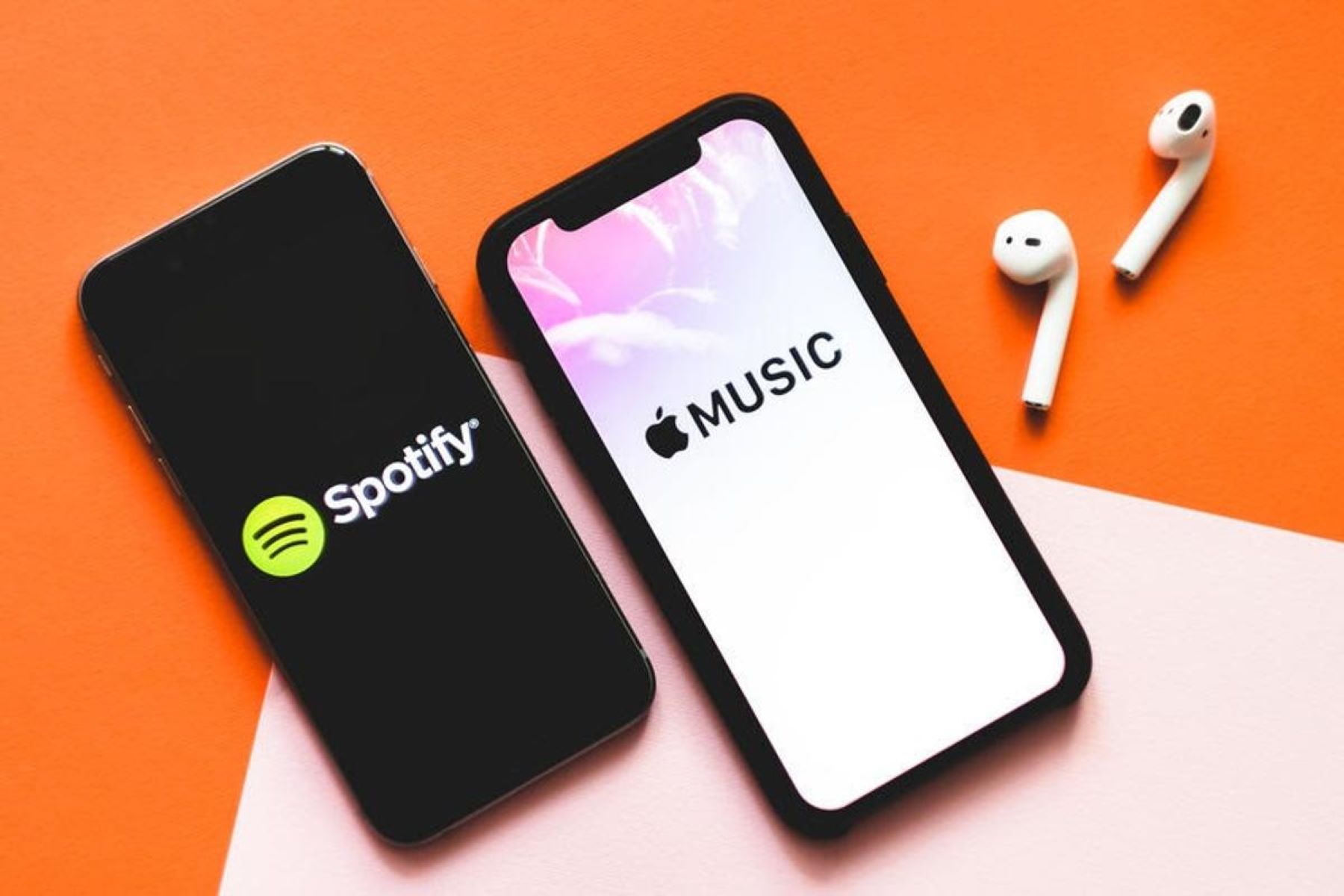


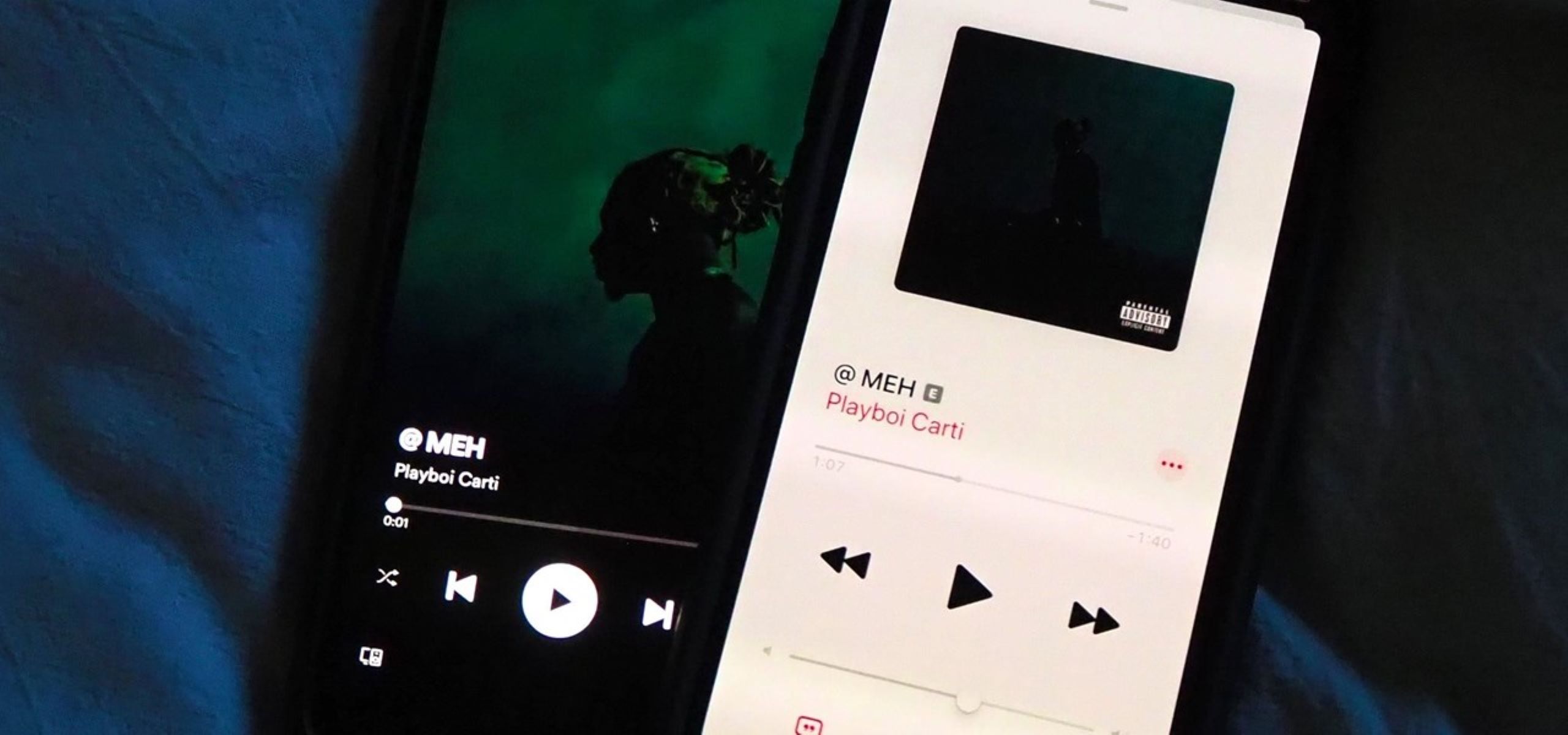
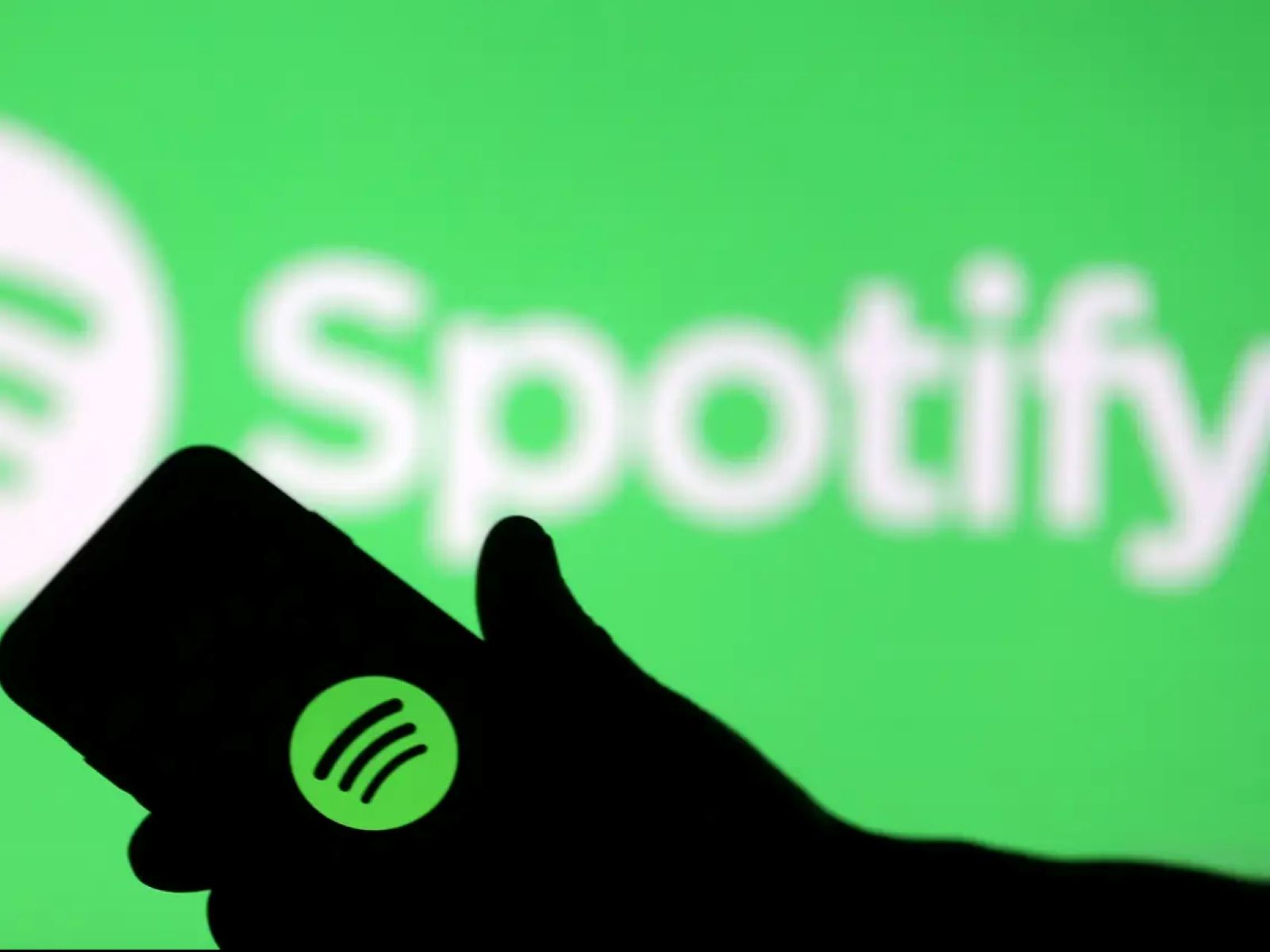
![How To Download Music Safe and Fast [GUIDE]](https://robots.net/wp-content/uploads/2022/04/how-to-download-music-featured-300x175.jpg)


